With the 2023 NFL Draft behind us, and with rookie minicamp coming up this weekend, it's time once again to open up the mailbag and answer questions from you, the fans. As always, thanks to everyone who asked questions this week, and apologies if I wasn't able to get to your question this time around. And remember, you don't need to wait for a tweet asking for questions to submit one, you can do so anytime you'd like at Seahawks.com/mailbag.
Daisy Kovacs from Winchester, Virginia asks, "The two first-round picks are solid, but shouldn't defensive line have been a priority rather than cornerback and receiver, which could have been addressed in later rounds?"
And on a similar note, Jud Hedges from Mountlake Terrace asks, "For the most part I like the Seahawks' 2023 draft, but the one thing going in we needed was a big, quality nose tackles. Cameron Young looks good but he's only 304 pounds. Why didn't we draft Siskin Ika at 340 pounds with the 83rd pick instead of trading it away, or draft Keondre Coburn instead of Mike Morris?"
A: Seahawks general manager John Schneider has noted on a few occasions, including in his pre-draft press conference last month, one way to make a mistake in the draft is to push players up the board based on need, or in other words, to reach for a player that fits a need rather than go with your highest-graded player.
As I detailed in this story on what it was like inside the Seahawks draft room, Schneider and company stuck to their draft board and truly did take their highest-graded players time and time again.
Yes, there were bigger needs, but if the Seahawks didn't view any of the available players at pick Nos. 5 or 20 as game-changing, first-round talents, wouldn't you rather get the best cornerback and receiver—two premium positions in today's NFL, by the way—than reach for a player who isn't going to be as much of a difference-maker?
As for Cameron Young, both Schneider and Seahawks coach Pete Carroll said he plays bigger than his 304 pounds, and while an Al Woods-sized nose tackle might be the ideal at that spot, build-wise, there just aren't a lot of players walking this earth who can get the job done at that size. As for the other players you mention, Ika and Coburn, I don't know specifically what the Seahawks thought of those two, but again, they were more interested in adding who they thought were the best players available at those spots—or in the case of the third-round pick, trade back because they didn't like their options there and because they got good value in return.
Elliott Sternbergh from Carlisle (Pennsylvania? England? Somewhere else?) asks, "Can you explain Schneider and Carroll's decision to trade their third-round pick (No. 83) to Denver for a fourth-round pick (No. 108, Anthony Bradford) and a 2024 third-round pick? That's a big drop and there is a lot of value in that pick.
A: While dropping from No. 83 to 108 is a somewhat substantial move back just about any trade value chart you can find would tell you that getting a 2024 third-round pick back for moving 25 picks back in the third/fourth-round range round represented great value for the Seahawks.
Of course, the Seahawks wouldn't want to trade back if there was a player they felt like they just had to get at No. 83, but the way the board fell for them, they felt better about moving back where they were still able to get a player they really liked in Bradford.
Additionally, Schneider noted that the 2024 draft is supposed to be a deep one, so he came into the draft hoping to add picks for next year.
@tompage asks, "We added major talent in the secondary during the offseason, namely Julian Love and Devon Witherspoon. Given the holdovers we have in Tariq Woolen, Mike Jackson, Coby Bryant, Quandre Diggs and Jamal Adams, who do we think the starters will be?"
A: You are correct in noting that some of Seattle's most noteworthy additions this offseason have come in the secondary. While you list seven players, and there are only four starting secondary spots in a traditional base defense, I think the Seahawks essentially view it as six starting spots when you factor in how often they want to use three-safety looks, and how often Seattle, like every NFL team, plays nickel defense.
Pro-Bowlers Tariq Woolen and Quandre Diggs are all but locks to be on the field nearly every down, as is Jamal Adams whenever he is back—Carroll has expressed optimism Adams will be ready for training camp. After adding Love, Carroll spoke at the NFL Annual Meeting about what that signing meant and about how much three-safety defense Seattle wants to play, which was also the plan last year before Adams' Week-1 injury.
Even if there are three safeties on the field quite a bit, the Seahawks will still use a nickel corner frequently, and having held down that role as a rookie, Bryant would appear to be the clear favorite to hold down that role. And while we're on the topic, three-safety defense doesn't necessarily mean "big nickel" with a safety on in place of a nickel corner. As we saw early last year before Adams' injury, part of that plan was to have Adams in the box taking the spot of a linebacker at times.
That leaves left cornerback and what figures to be the true competition for a starting job. Jackson played well in that role last year and certainly won't give it up without a fight, just as he held off in-season challenges for his job during the season last year. But the Seahawks did use the fifth-overall pick on Witherspoon, so clearly they think very highly of his abilities. A player picked that highly should be on the field right away and most would peg Witherspoon as the favorite for a starting job, but seeing the way Jackson handled last season, I wouldn't expect him to give up that job without a good fight in training camp.
@AgustingCastrop asks, "Does the front office get word of picks that happen before they're announced on television?"
A: If you've ever sat in front of twitter while the draft is going on, you'll notice that some media members are "tipping" picks ahead of the TV broadcast. This is possible because what you see on TV is slightly delayed from real time, and there is an internal feed that teams (and apparently some well-connected reporters) have access to that updates picks faster than the TV broadcast.
For example, when the Seahawks are making a pick, they'll have already called the pick into the league, called that player to welcome them to the team, then still have time to turn their attention to the TV broadcast to see the pick announced.
@CelestialMosh asks, "With the addition of Derick Hall, as well as free agents, I think some of us dummies need a crash course on which linebackers and edge rushers are playing what position.
A: First off, there's nothing dumb about this question. It can definitely be confusing when a team changes things up schematically, as the Seahawks did last season, going from a 4-3 (four down linemen, three linebackers) to a 3-4. Suddenly, players who for years you were used to thinking of as defensive ends are now classified as outside linebackers. Were the Seahawks running this scheme years ago, many of the defensive ends you remember like Cliff Avril, Chris Clemons and Frank Clark, likely would have been listed as outside linebackers, while a lot of the players you may have previously thought of as defensive tackles—Jarran Reed, for example—are now listed as ends.
So what does that all mean when it comes to the current roster? The Seahawks have six players they would consider off-ball linebackers in Bobby Wagner, Jordyn Brooks, Devin Bush, Jon Rhattigan and, when he's he not playing fullback, Nick Bellore. In addition to that group, Schneider noted during the draft that Vi Jones, who mostly played outside linebacker last season, is going to work at inside linebacker as well. Seattle's outside linebackers, who look and play a lot like defensive ends in the old scheme, are currently Uchenna Nwosu, Darrell Taylor, Boye Mafe, Tyreke Smith, Derick Hall, Alton Robinson, Josh Onujiogu and Chris Garrett.
And what the Seahawks now call a defensive end looks a lot like a defensive tackle in the past, with Dre'Mont Jones, Mike Morris and Jarran Reed all listed at that spot while weighing 281, 292 and 306 pounds, respectively.
Go behind the scenes with Seahawks team photographer Rod Mar as he documents the Seahawks Draft Room during the 2023 NFL Draft. Eye On The Hawks is presented by Western Washington Toyota Dealers.


Prior to the start of the first round of the NFL Draft, Seahawks general manager John Schneider gathered the football staff for a brief meeting in the team's draft room.

General manager John Schneider confers with Seahawks chair Jody Allen in the draft room.

Seahawks head coach Pete Carroll watches intently as general manager John Schneider evaluates the draft board.

Head coach Pete Carroll stares at multiple monitors in the team's draft room.

Seahawks head coach Pete Carroll and general manager Pete Carroll confer.

John Schneider makes the call to one of the Seahawks draft selections as head coach Pete Carroll waits to speak to the newly drafted player.

General manager John Schneider fist bumps with scout Director of College Scouting Aaron Hineline as Assistant GM Nolan Teasley watches.

Head coach Pete Carroll and assistant coach Nate Carroll chat outside of the team's draft room.

Seahawks assistant coaches and football personnel cram into head coach Pete Carroll's office to watch the draft together.

Seahawks head coach Pete Carroll, general manager John Schneider and assistant GM Nolan Teasley share a laugh near the end of the first round.
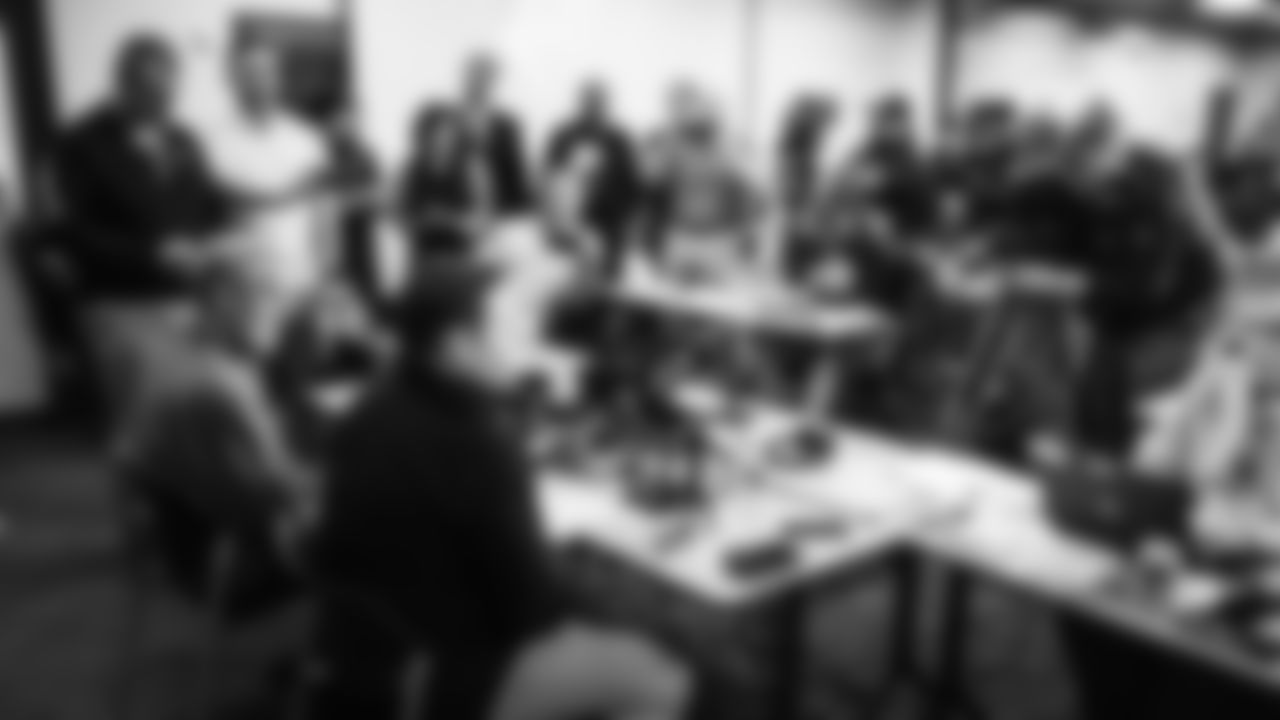
At the completion of the first round, Pete Carroll and John Schneider met with the media.
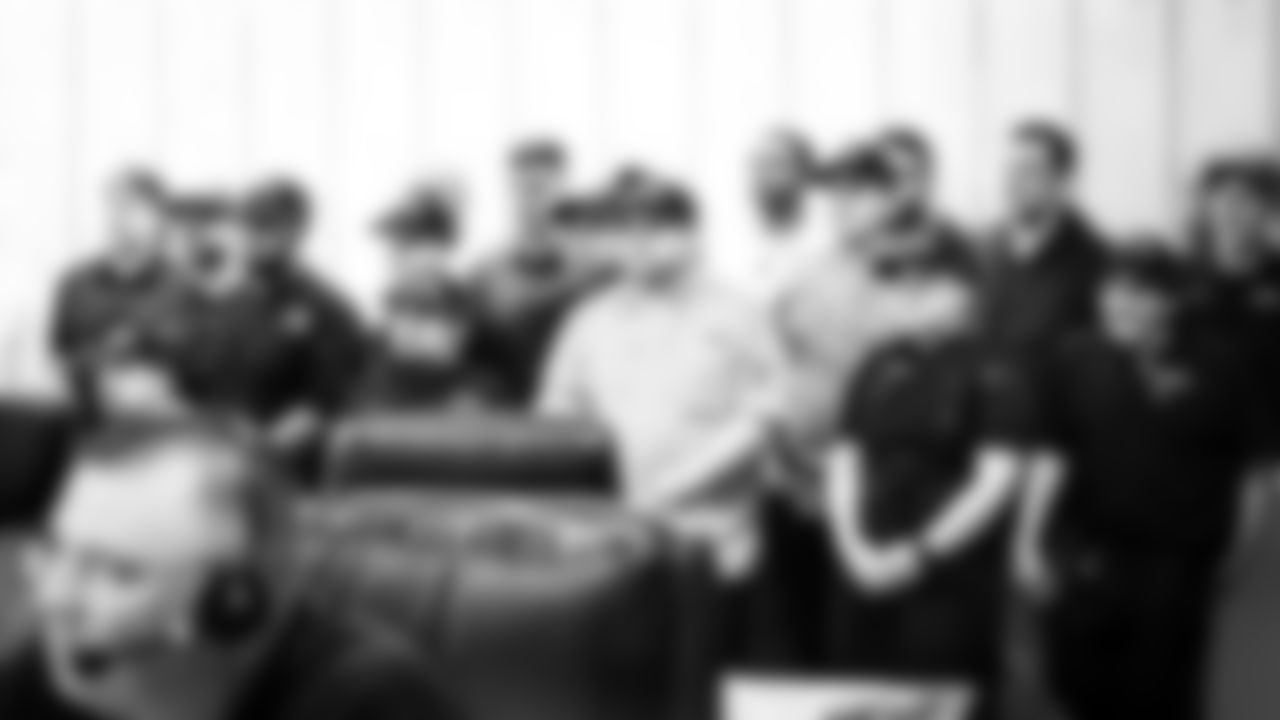
To begin Day 2 of the NFL Draft, Seahawks general manager John Schneider brought organization's entire cooking staff in to the draft room to be recognized for their talent and efforts.

Seahawks GM John Schneider and assistant GM Nolan Teasley confer.

Seahawks general manager John Schneider works at the front of the room during the second round of the draft.

Assistant GM Nolan Teasley and GM John Schneider applaud as their selection is announced.

Seahawks GM John Schneider works the phones after taping a sign to his computer monitor reading "Love you Mom", after he learned his mom was watching the live feed from the draft room.

Seahawks run game coordinator and running backs coach Chad Morton talks to running back Zach Charbonnet after they selected Charbonnet in the second round.
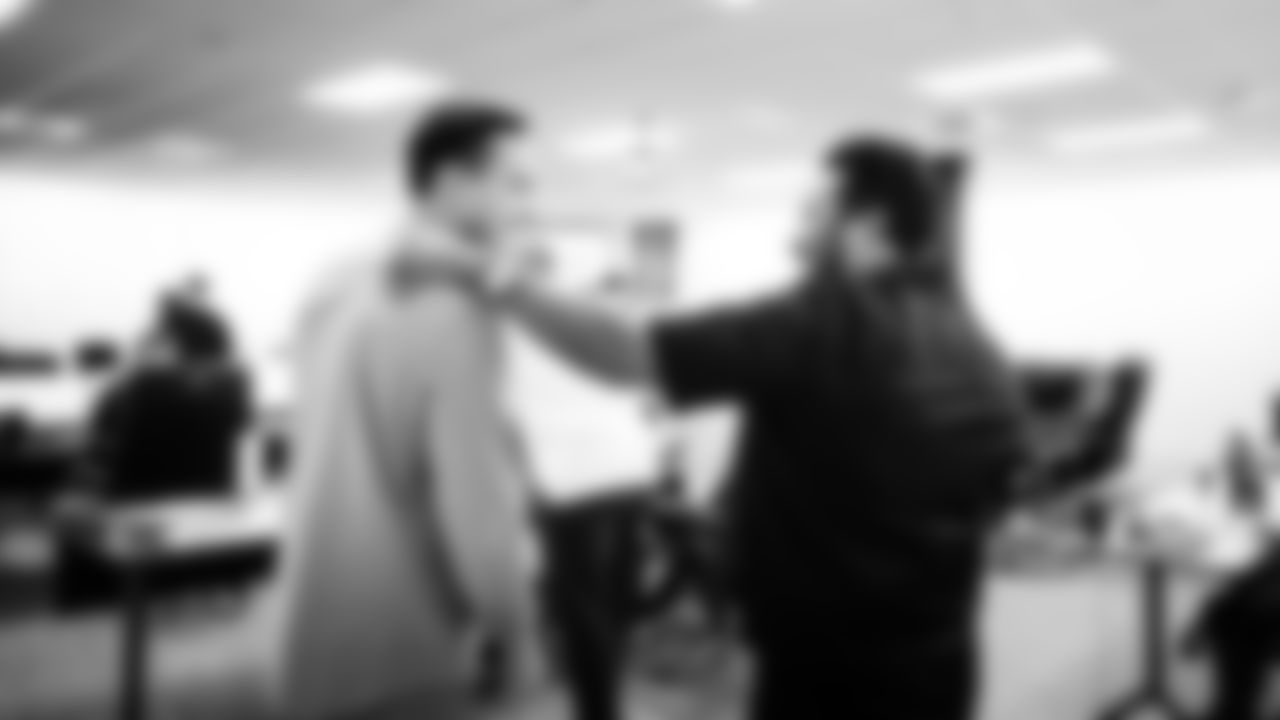
Seahawks assistant general manager Nolan Teasley and running game coordinator Chad Morton share a smile after selecting running back Zach Charbonnet.

John Schneider and Pete Carroll working in the team's draft room on day 3 of the draft.

Seahawks general manager John Schneider gives instructions during the first round of the draft.
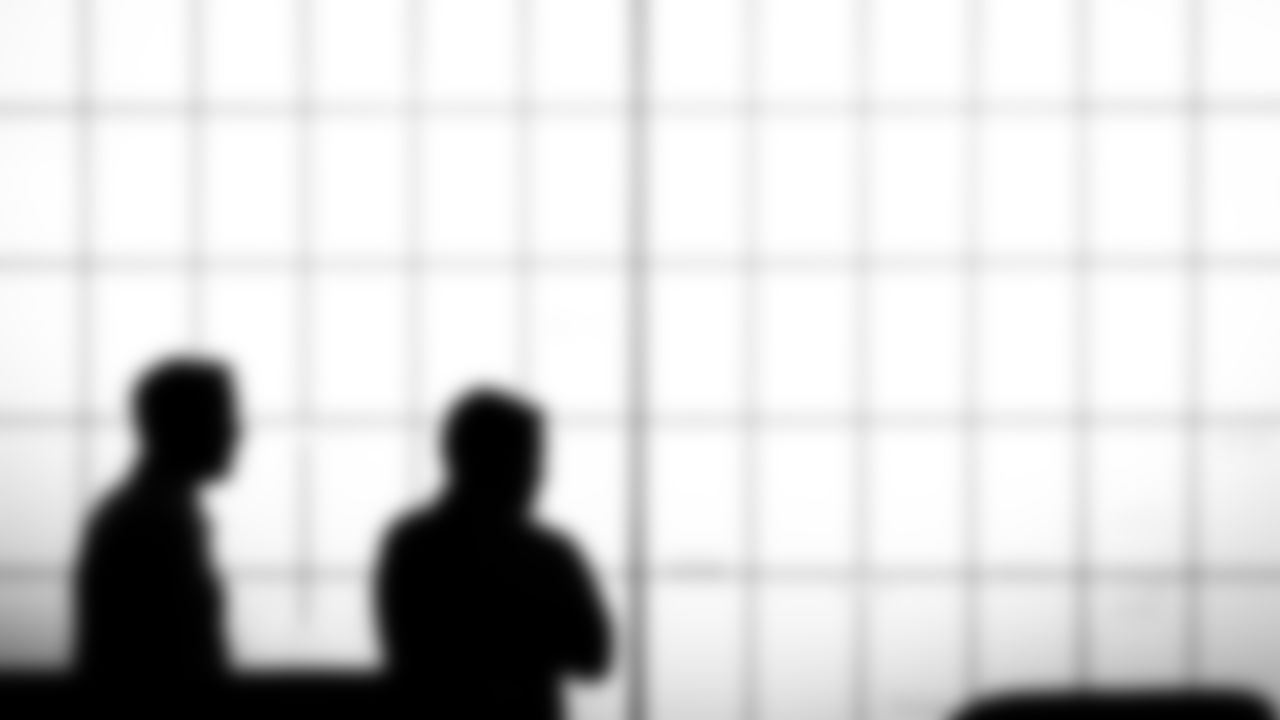
Head coach Pete Carroll and general manager John Schneider stand in front of the large draft board. (Names and information are obscured in this image for reasons of team security.)

At the conclusion of the 2023 NFL Draft, Seahawks John Schneider leaves the draft room.
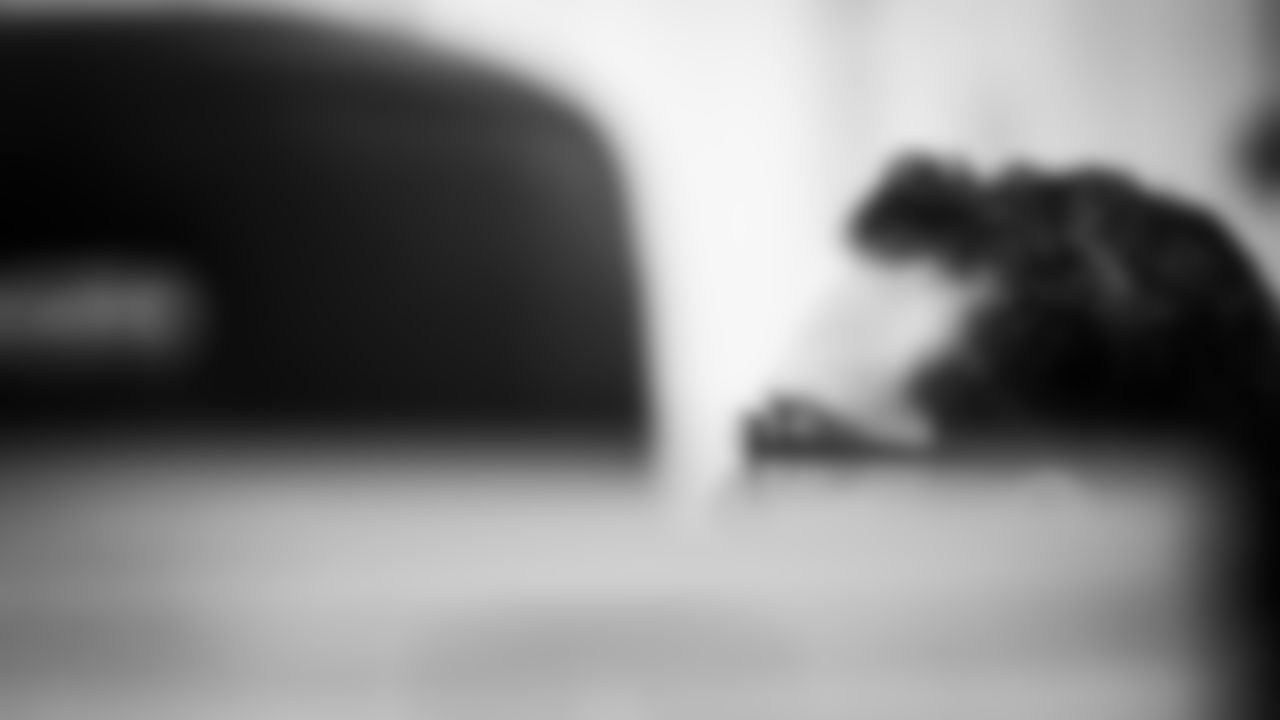
Seahawks general manager John Schneider in the draft room on day 3 of the draft.

Seahawks Director of College Scouting Aaron Hineline stays focused on day 3 of the draft.

Seahawks general manager John Schneider looks for information during day 3 of the draft.


Seahawks head coach Pete Carroll hands the phone to defensive coordinator Clint Hurtt during day 3 of the NFL Draft.
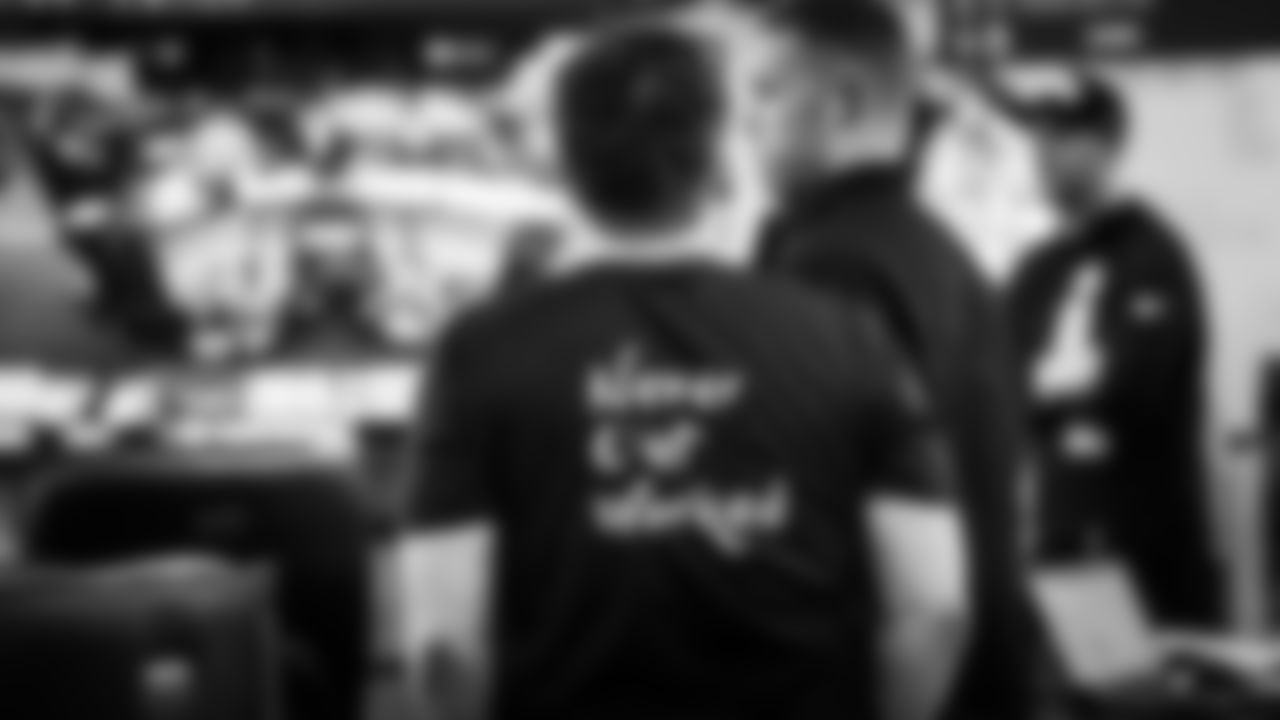
Seahawks GM John Schneider wears a shirt reading "Never Out Worked" in the draft room on day 3.















